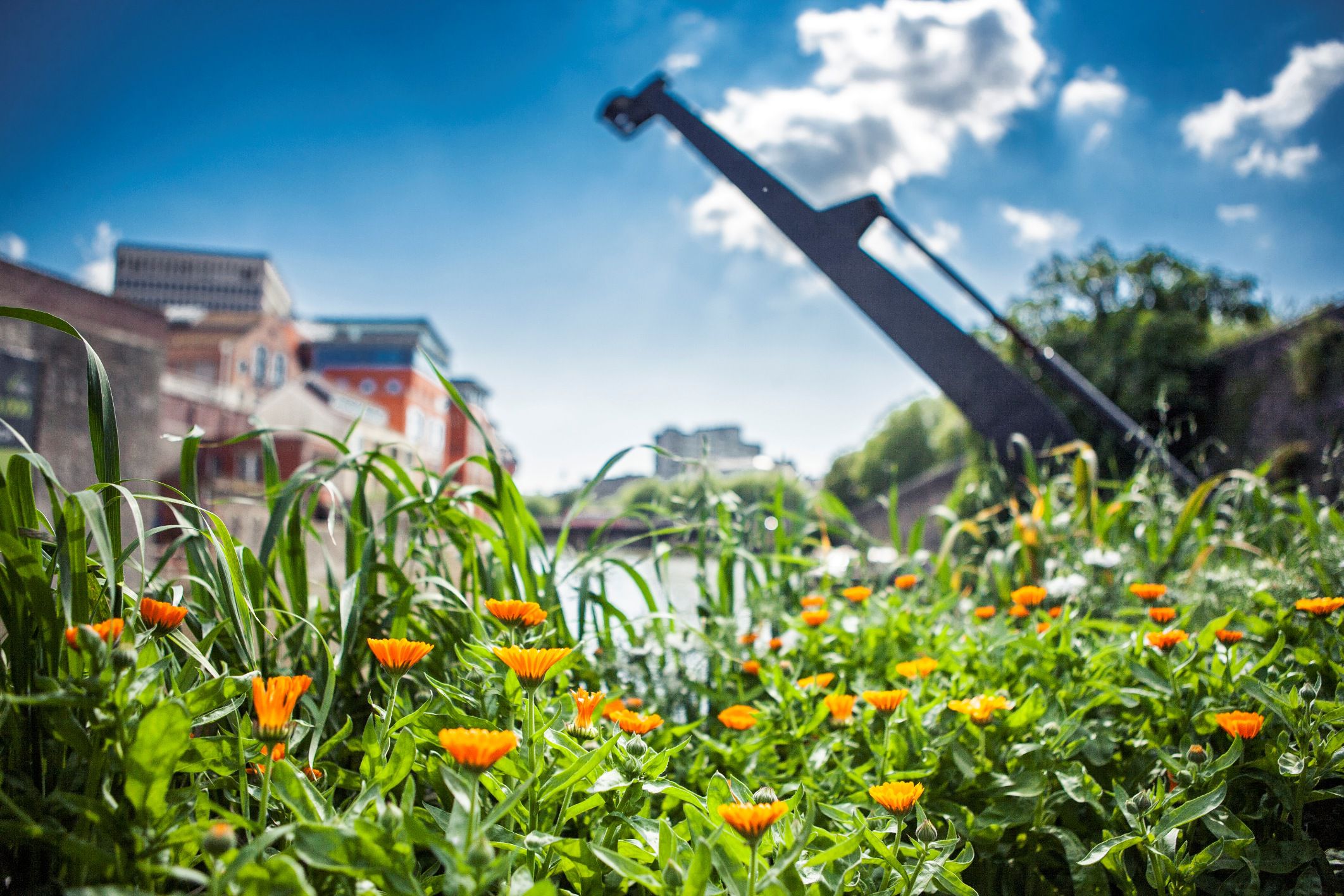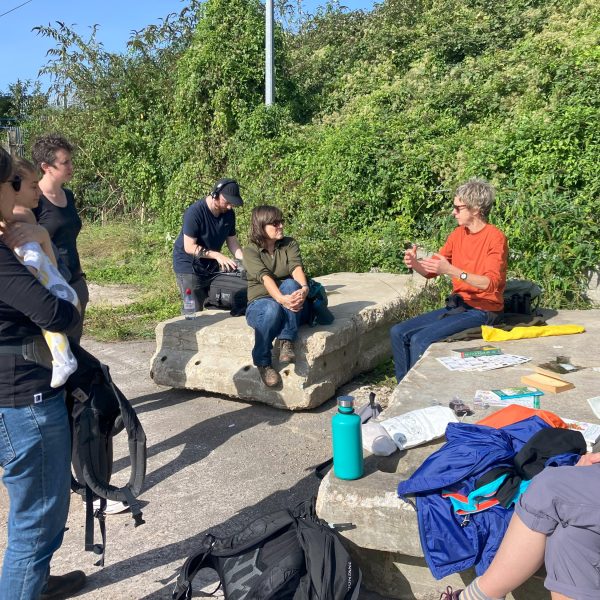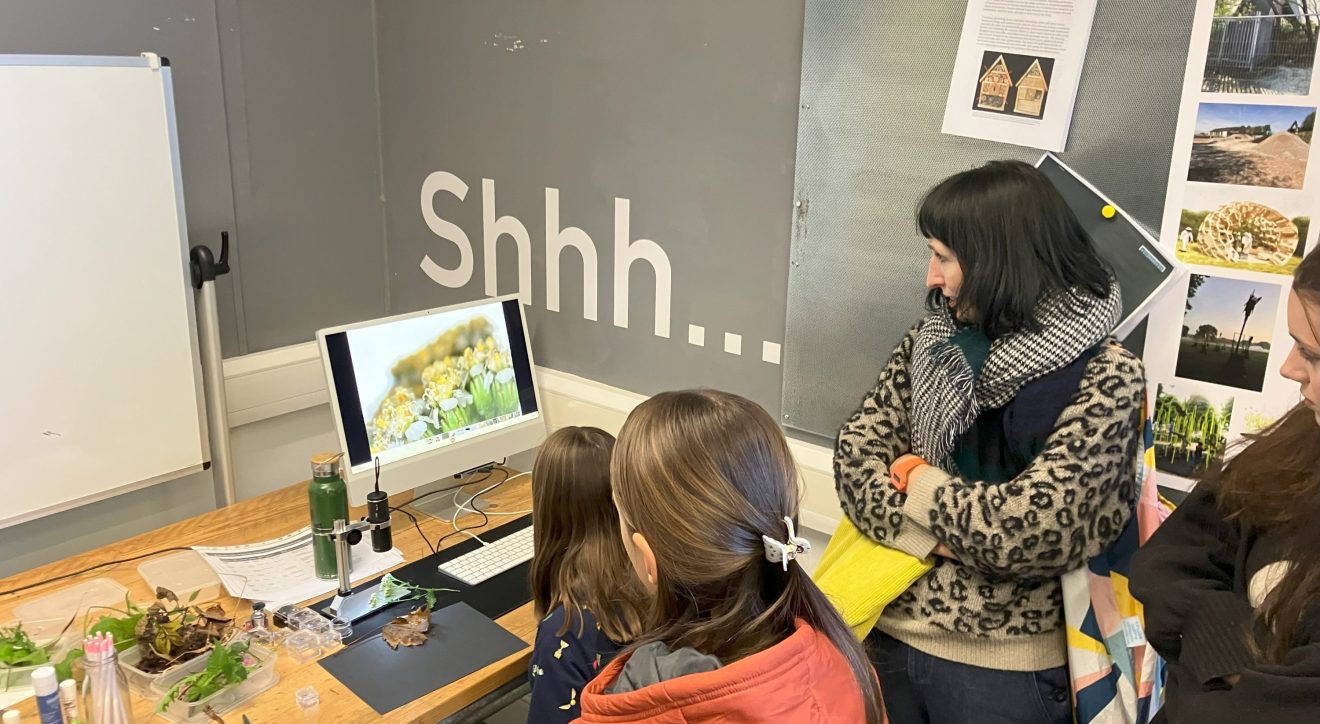
2012 - 2017
Seeds of Change: Floating Ballast Seed Garden
By Maria Thereza Alves (Design: Gitta Gschwendtner)
Complete Citywide
Ginkgo Projects are working with Studio Hive to deliver their public art programme for Plot 6, Silverthorne Lane, the westerly most plot in the Silverthorne Lane development.
Within Plot 6, this approach has taken the form of a 6-month artist residency, programme of engagement and public event with artists Rachael Champion and Jonathan Trayte called Transitional Waters.
"The Feeder Canal Residency has enabled us to design a public artwork for Plot 6 that responds meaningfully to Bristol's Silverthorne Lane, connecting the artwork to the site's post-industrial history, unique ecology and surrounding communities.”Artist Rachael Champion


Ginkgo Projects produced a site-wide public art strategy for Silverthorne Lane which proposed an approach to commissioning focusing on green and blue infrastructure (the ecology of both the land and water within the site) and access to nature prompted by the fact that the Feeder Canal forms one side of the entire length of the site boundary.
Rachael Champion and Jonathan Trayte were commissioned to undertake a 6-month residency, through which they researched, tested and created proposals for an urban nature reserve on the Plot 6 site.
The residency has been an opportunity to explore ways of supporting both the urban wildlife and those people who interact with it to better co-exist and care for one another, increasing people’s understanding and awareness of the wildlife in and around the Feeder Canal. When completed, the urban reserve will become an area of enriched accessible green that will mature and invite further wildlife and visitors into the site as the years go by.
During the residency phase, Rachael and Jonathan have developed partnerships with organisations and experts such as City of Bristol College, Screenology, Bristol Natural History Consortium, and UWE Bristol, as well as artists, makers and nurseries, community groups and businesses in the St Phillips Marsh area.
A public programme of activity took place from September to November as part of the artist residency, including: participation in a Europe wide bioblitz; creation of temporary animal shelters with students from the foundation course at City of Bristol College; a sound artwork by artists Sonia Levy and Lucy A Sames; and a project with students from Screenology (a film making school based on Silverthorne Lane). The residency culminated in an event and exhibition at the Screenology building on Silverthorne Lane in November 2023.
This tied into the UK wide bioblitz being held on the same day. A bioblitz is a communal citizen-science effort to record as many species within a designated location and time period as possible.
The bat walk was led by expert Caroline Nash. It explored the area around Bristol’s Feeder Canal, listening to and observing the area’s bat population. The data collected contributed to the Bristol Natural History Consortiums EuroBioblitz 2023. Pipstrelles and Soprano Pipistrelles were recorded out by the canal during the walk.
A freshwater/canal ecological survey of the Feeder Canal with Dr Frederick Windsor.
For this aspect of the research residency, Rachael and Jonathan worked with artists Sonia Levy and Lucy A. Sames to create a sound artwork that captures unseen and critical perspectives about the Feeder Canal’s ecology and history. It provided unusual perspectives and outlooks on the canal’s ecology and history, providing a nuanced and refreshing interpretation of the site.
Sonia Levy – Collaborating Artist: Sonia Levy’s research-led practice considers shifting modes of engagement with other/more-than-human worlds in light of prevailing earthly precarity. Her work operates at the intersection of art and science, a co-becoming of practices tending to the reweaving of multispecies worlds.
Dr. Lucy A. Sames – Researcher: Lucy is a curator, writer and researcher living and working between London, Bristol and South Wales.
Rachael & Jonathan collaborated with Urban Ecologist Heather Rumble and City of Bristol College foundation students to design and build a series of architectural structures for local wildlife. The architecture was designed with specific species in mind with a creative sculptural aesthetic to generate visual interest for the area’s more-than-human visitors and habitants. The students responded to a real-world brief and their observations and outcomes influenced the final designs for the wildlife reserve at Plot 6.
It was an exciting week with the students at City Bristol College. Working in groups, the students made initial designs, models and then dove into constructing their sculptures. The pieces were transported to the Barton Hill Trading Estate adjacent to Plot 6 where they were hosted by local company Rank Engineering (they can be seen from Feeder Road) and St. Philips Marsh Nursery School. The sculptures will remain at these locations until August of 2024.
Screenology, documented the whole project.
A weekend exhibition and event bringing the residency to a close. Transitional Waters explored Bristol’s Feeder Canal as a cultural and ecological place in transition. The exhibition featured artworks and research created and encountered during the Feeder Canal Research Residency. The event was held at Screenology and included an exhibition, creative workshops, vegan lunch and a series of talks:
– Industry and Bristol’s Waterways by Dr. Marianna Dudley, environmental historian, University Of Bristol
– A.H.C Smith writer, author of Up the Feeder, Down the Mouth, A play about Bristol’s Docks
– Heavily Modified Water Bodies by Sonia Levy, artist
– Dr. Fred Windsor, network ecologist, Cardiff University
– Dr. Caroline Nash, green infrastructure ecologist, University of East London

“The Feeder Canal residency enabled us to meaningfully engage with Silverthorne Lane through research and community participation. We worked closely with ecologists, artists, students and long-time members of the community through a series of creative workshops, ecology survey's, and an audio commission. We were also able to share this with the public through Transitional Waters; an event with invited speakers, a film screening and an exhibition about the research residency"Artist Rachael Champion